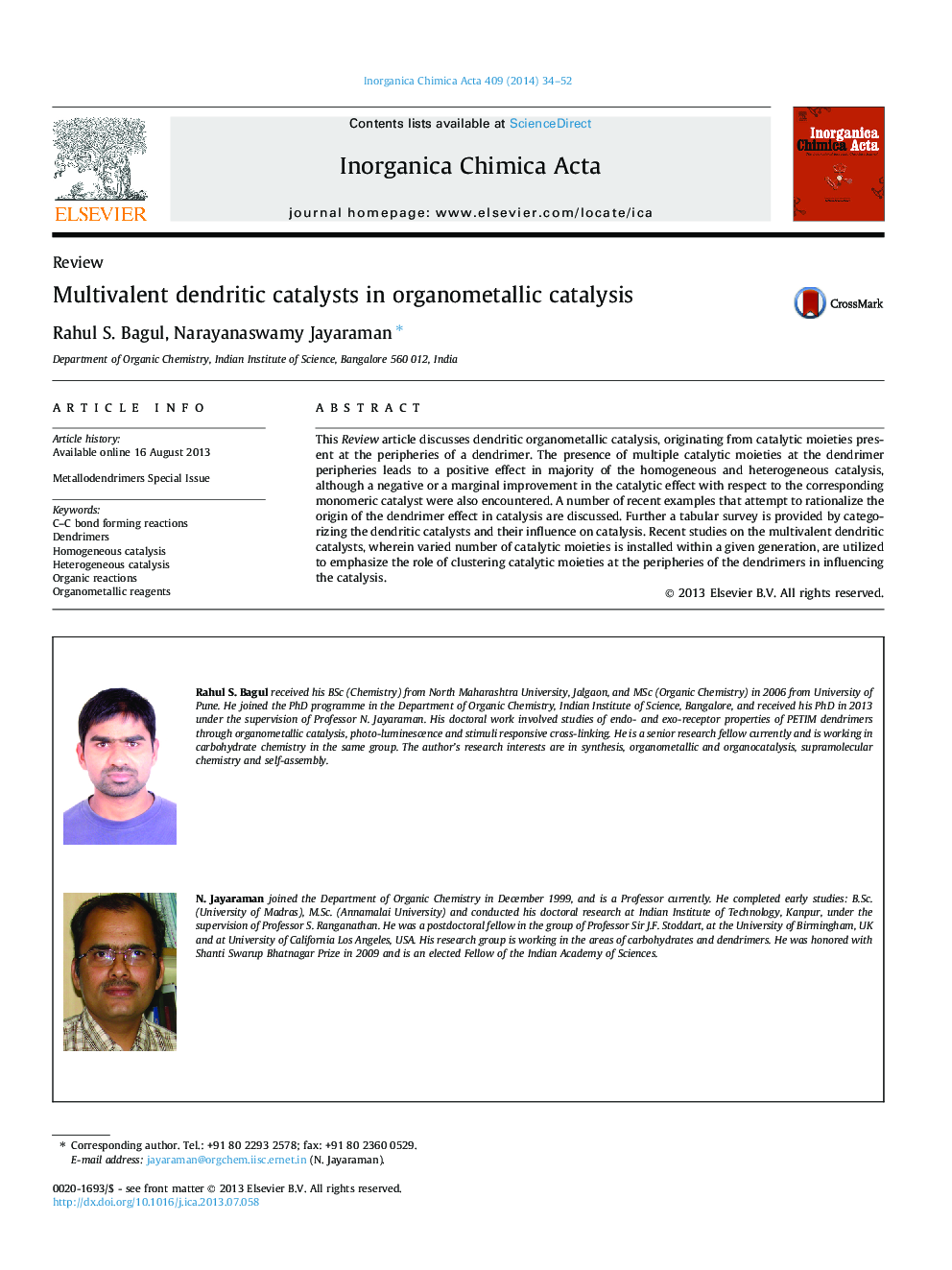| Article ID | Journal | Published Year | Pages | File Type |
|---|---|---|---|---|
| 1310092 | Inorganica Chimica Acta | 2014 | 19 Pages |
•Dendrimers interfacing organometallic catalysis have been established firmly.•Dendrimers having catalytic moieties at the peripheries were pursued largely.•Both positive and negative dendritic effects in catalysis have been reported.•Steric crowding and multiple catalytic moieties rationalizes the dendritic effects.•Multivalency were studied using dendrimers with graded number of catalytic moieties.
This Review article discusses dendritic organometallic catalysis, originating from catalytic moieties present at the peripheries of a dendrimer. The presence of multiple catalytic moieties at the dendrimer peripheries leads to a positive effect in majority of the homogeneous and heterogeneous catalysis, although a negative or a marginal improvement in the catalytic effect with respect to the corresponding monomeric catalyst were also encountered. A number of recent examples that attempt to rationalize the origin of the dendrimer effect in catalysis are discussed. Further a tabular survey is provided by categorizing the dendritic catalysts and their influence on catalysis. Recent studies on the multivalent dendritic catalysts, wherein varied number of catalytic moieties is installed within a given generation, are utilized to emphasize the role of clustering catalytic moieties at the peripheries of the dendrimers in influencing the catalysis.
Graphical abstractThis Review article summarizes developments in the studies of multivalent organometallic dendritic catalysts, specifically, dendritic catalysts with peripheral functionalization of catalytic moieties. Possible origins of positive and negative dendritic effects are provided from a number of studies in recent years.Figure optionsDownload full-size imageDownload as PowerPoint slide
